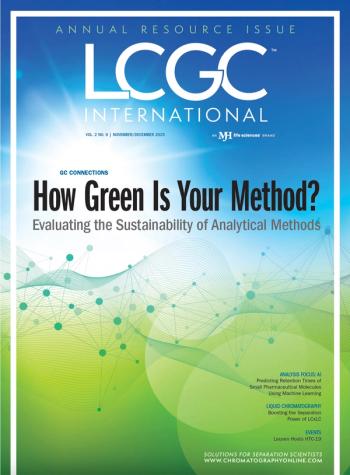
- The Column-06-21-2013
- Volume 9
- Issue 11
French wine originates from Italy?
Wine is enjoyed worldwide, with France renowned as a top producer. However, the earliest known biomolecular evidence of grape wine and winemaking has been presented in the Proceedings of the National Academy of Sciences (PNAS)1
Liquid chromatography coupled to orbitrap mass spectrometry was used to analyse ancient wine and grape samples.
Wine is enjoyed worldwide, with France renowned as a top producer. However, the earliest known biomolecular evidence of grape wine and winemaking has been presented in the Proceedings of the National Academy of Sciences (PNAS)1, indicating that the origins of French viniculture lie in Italy.
Etruscan amphoras (pottery vessels) dating back to around500 B.C. and known to have been imported to France fromItaly were selected for investigation. Specimens were selected that showed evidence of liquid residues, appeared whole and unwashed, and that had not been previously disturbed.
Dr Patrick McGovern, Director of the BiomolecularArchaeology Laboratory at the University of PennsylvaniaMuseum of Archaeology and Anthropology (Pennsylvania,USA), worked in collaboration with colleagues from Franceand the USA to chemically analyse residues adsorbed to thepottery fabric.
Sample extraction was performed first, followed byinfrared spectrometry (IRS), solid-phase microextraction(SPME), and ultrahigh-performance liquid chromatographytandem mass spectrometry (UHPLC–MS). Residues extractedfrom the amphoras identified positively for tartaric acid andtartarate, biomarkers for Eurasian grape and wine in theMiddle East and Mediterranean.
Reference
1. P. McGovern et al, PNAS, DOI:10.1073/pnas.1216126110 (2013).
Articles in this issue
over 12 years ago
The 2013 LCGC Awards: Part 1over 12 years ago
Fluorochemicals in food packagingover 12 years ago
MRC-NIHR Phenome Centre aims to advance personalized medicineover 12 years ago
Losing our Heads!over 12 years ago
Screening drugs in salivaNewsletter
Join the global community of analytical scientists who trust LCGC for insights on the latest techniques, trends, and expert solutions in chromatography.



